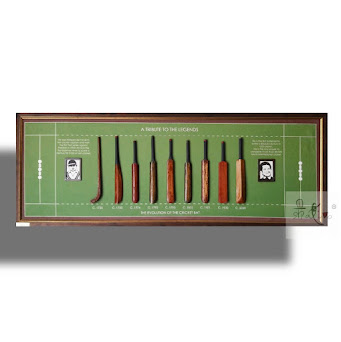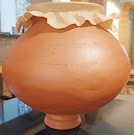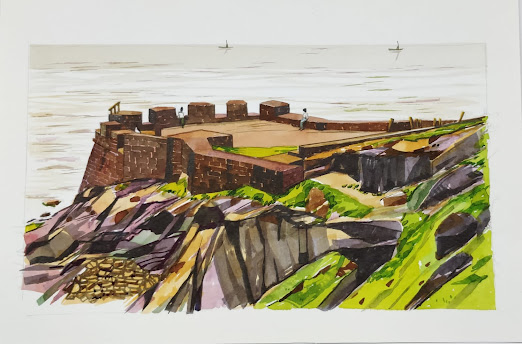Daatê - The stone grinder
Most Indian homes including those in Goa used this traditional grinding method to make flour of different cereals and grains.
In Goa, some remote villages along the border, practice this method of making flour till date. The process involves rotating the stones in circles which required a lot of strength and energy. Women of the house would usually practice this.
Activities like grinding stones for flours, pulling up water from the wells, grinding masalas/coconut/batter in rolling or rotating stone, use of mortar and pestle for making flour, batter etc kept people of the previous generations automatically fit and strong.
I discovered a number of such grinding stones buried around the periphery of our ancestral house at Quepem, some of them, more than 200years old.
Other stones for pounding papad batter and grinding are still buried around the house. Some are so heavy that 4 -5 labourers are needed to pull them out.
Wheat flour has been made from prehistoric times. Of Course, there were no flour mills earlier, the earliest method used for producing wheat flour involved grinding grain between two stones.
In Goa, this was used to grind rice and other grains as wheat was not a part of Goan diet until the past few decades.
These methods included - Musal (konkani)mortar and pestle (a stone club striking grain held in a stone bowl), Vaan (konkani), the saddle stone - a cylindrical stone rolling against grain held in a stone bowl, and Fater (konkani)- the quern (a horizontal, disk-shaped stone spinning on top of grain held on another horizontal stone). These devices were all operated by hand.
This principle was used to create the first simple flour mills, two stones of right shape were rubbed together in which wheat was poured from the top and flour emerged from the grinding surfaces. Then, the addition of leavers to grinding stone gave them the ability to mill a large quantity of wheat flour. For thousands of years, civilizations used the same principle as a flour mill only modified to harness the energy of horses, oxes, wind or water.
The industrial revolution made possible the invention of reapers and threshing machines which also led to the revolution of flour mill design. Power carried by shafts, belts and gears was used to turn one or a series of stones. Water began to displace wind as a more dependable source of power and larger milling plants were built near sources of water power.
The second half of the 19th century was a period of immense development and change in flour milling. Hundreds of patents were issued for mechanical purifiers, sifters, cleaners, dust collectors, grain washers and other milling equipment. Together, these improvements and refinement of the basic process-separating the outer bran and germ from floury, inner endosperm- made possible the modern mill.
 |
| Original antique at a museum in Goa. |
Today, wheat arrives at modern flour mills and elevators by ship, barge, rail or truck, wherein wheat undergoes commercial flour milling.
Wheat flour processed in commercial flour mills contains a small number of additives. Bleaching agents such as benzoyl peroxide are added to make the flour look whitish. Oxidising agents such as potassium bromate, chlorine oxide is used to enhance the baking quality of the wheat flour. The additives are added a few parts per million.
I am sure the above flours are no comparison to the flours that were obtained from the 'Daate' - it's purity and the fact that it was made with so much of love and patience!
Thanks to this ritual during ‘haldi', a ceremony held just before the marriage day, at both, the groom’s as well the bride’s house. During this ceremony 5 married ladies fully decked up in jewellery, carry out this ritual of grinding a few pulses on their ancestral grinding stone, by singing some traditional folk songs called ’vavli’ in Konkani language.
In memory of this infamous stone grinder and in recognition of our traditions and culture, got it carved in wood!
I have left it in natural wood finish with a protective coat on the outer side.
This piece can actually coarse grind a few spices.
Daatê - a cute little heritage item as a memory to connect to ancient tools of everyday use.
A coffee table decor | Souvenir | Utility
For the love of Goa
RNK ❣️
Visit our Studio at: Basilios 7 Heights, Level 4, ST.INEZ, PANAJI-GOA.
7020068459 / 7507149033















Comments
Post a Comment